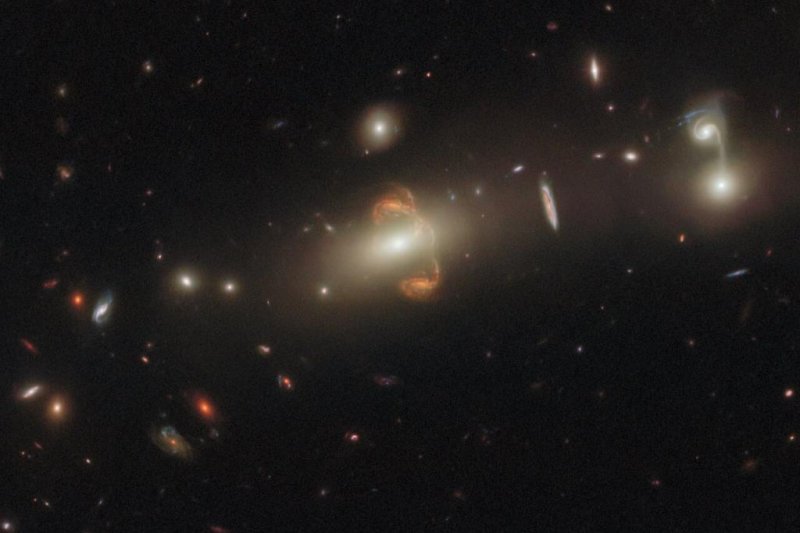
A new image from the Hubble Space Telescope captures a distant galaxy in the northern constellation Bootes, along with the mirror image of that galaxy created through gravitational lensing. Photo courtesy of J.Rigby/ESA/Hubble & NASA.
Aug. 2 (UPI) -- A new image of a single distant galaxy from the Hubble Space Telescope has NASA astronomers seeing double.
The space agency released the photo Tuesday showing what appears to be the mirror image of two galaxies at the center, which NASA says is actually one gravitationally lensed galaxy called SGAS J143845+145407.
The galaxy is located in the northern constellation Bootes.
The mirrored effect in the photo comes from gravitational lensing, which is how a large object, like a galaxy, can appear to be distorted, duplicated or even magnified.
"Gravitational lensing occurs when a massive celestial body -- such as a galaxy cluster -- causes a sufficient curvature of spacetime for the path of light around it to be visibly bent, as if by a lens," the European Space Agency said in a press release.
"Appropriately, the body causing the light to curve is called a gravitational lens, and the distorted background object is referred to as being 'lensed.'"
Hubble was the first telescope to detect faint and distant gravitational lenses that could not be seen with ground-based telescopes because of the Earth's atmosphere. Gravitational lensing, or distortion that can act as a magnifying glass, allows astronomers to view objects that would otherwise be too faint to see.
In March, the Hubble Space Telescope spotted a star 12.9 billion light years away from Earth, the oldest and most distant object ever recorded.
NASA said light from the star existed within the first billion years after the so-called Big Bang and was seen through space warped by a galaxy cluster that created a "natural magnifying glass."
Images captured last month from the James Webb Space Telescope include several showing lensed galaxies that appear to be distorted.
Hubble's sensitivity allows the telescope to take full advantage of gravitational lensing to look inside galaxies in the early Universe, according to ESA.
"The lensing reveals details of distant galaxies that would otherwise be unobtainable, and this allows astronomers to determine star formation in early galaxies," ESA said. "This in turn gives scientists a better insight into how the overall evolution of galaxies has unfolded."
No comments:
Post a Comment